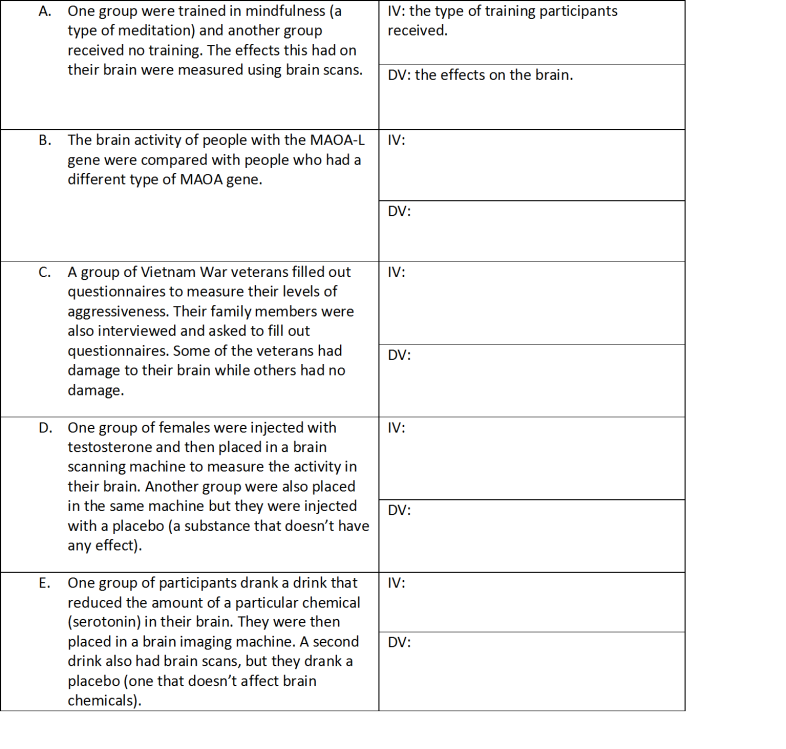This lesson accompanies section 1.2(a) in IB Psychology: A Student’s Guide.
Hook
As a class, watch this clip from the BC documentary “Human Instincts” to show the replication of the MHC gene study. After this, I like to use the introduction slideshow to explain the definitions of an IV and a DV and how they were shown in this particular study (i.e. the IV is the type of MHC genes and the DV is how pleasant the smell was rated).
NB: As the other studies in this lesson idea come from the criminology chapter, it would be better to use a study to hook students in that shows variables related to crime and/or violence in some way. If anyone finds an interesting and basic study with a good video that would make for a better hook, please mention it in the comments. I’d be forever grateful 🙂
Activity
Provide pairs of students with a list of very simplified summaries of experiments and have students identify the IVs and the DVs in each study. I like to use studies from the criminology unit, as this is the first unit in our course after the introduction. You can see the studies I use in the list below.

This is the summary of studies that I use for this activity.
You can download an extract from the first basic draft of my student workbook here.
Check-in
I like to check student’s work to make sure they’re on the right track, and they can also answer the lesson’s guiding question in their workbook, using the textbook to help them if they need it.
Extend
An extension task for fast finishers could be to state the aim of each experiment, being sure to include the IVs and DVs in the aim.
Another extension task could be to watch this video by the amazing guys at CrashCourse:
[youtube https://www.youtube.com/watch?v=hFV71QPvX2I]In the next lesson in the textbook we explore further how drawing conclusions from experiments revolves around the idea of understanding relationships between IVs and DVs.
Every year when I start the course with a simple bit of formative assessment to see what students understand about IVs and DVs, I’m amazed (and shocked) at how many are unfamiliar with these basic concepts. It might just be, however, that they’ve had a summer to forget and/or they can’t quite connect the dots from science class to psychology class. Regardless, early in the course I think it’s imperative for students to understand the difference between an IV and a DV. The following activity is simple, yet effective.
If you’ve got any ideas on how this lesson could be improved, or other ways of teaching IVs and DVs, I’d love to hear your thoughts in the comments.
Travis Dixon is an IB Psychology teacher, author, workshop leader, examiner and IA moderator.
